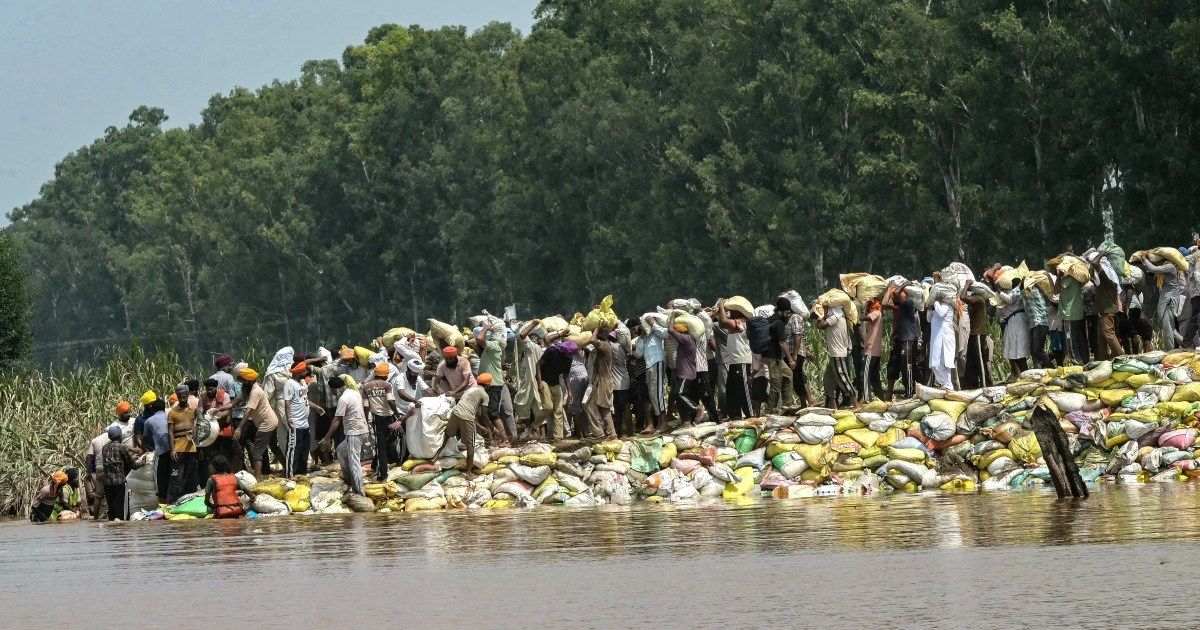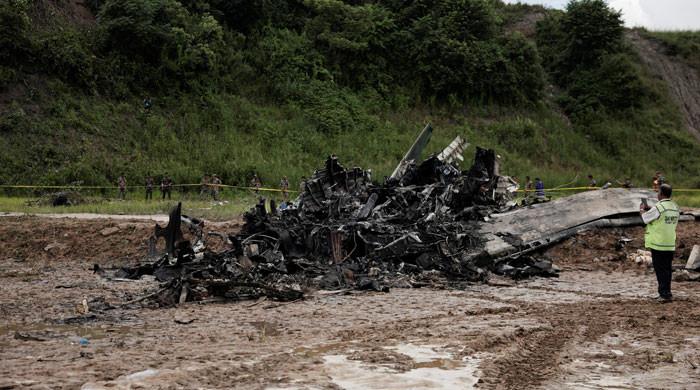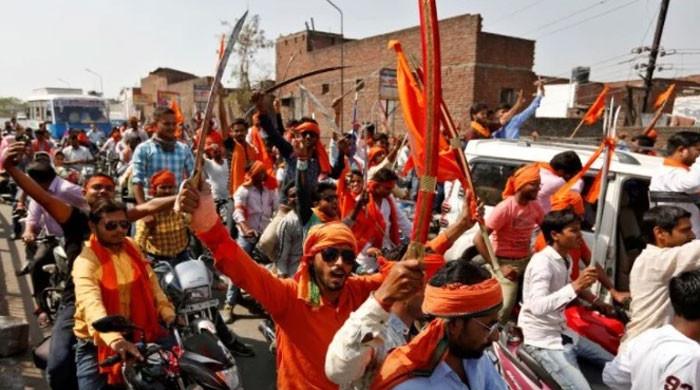After receiving multiple economic successes in his home, Gurvier Singh, a 47 -year -old farmer in Gurdaspur, in the Punjab state of India, took a loan of one million rupees ($ 11,000) from a private lender to marry his eldest daughter. He kept a part of that and used it to sow 3 acres (1.2 hectares) of rice.
He made his commitment to the variety of high -performance pearl pearls of Basmati Aromatic. A good sale would have given a gain of almost 1 million rupees per acre ($ 11,400 for 0.4 hectares).
But now, Singh's pearl grains are submerged in flood water, buried under layers of land and sediment.
“I can't afford this shocking flood at this time in my life. We are ruined,” Singh told Al Jazeera. “This year's harvest was supposed to cover our debts. But this field is a lake now, and I don't know how I will start again.”
Singh also had to temporarily abandon his home, along with his wife and two children, after the devastating floods arrived at their village earlier this month. “What will I go back?” He wondered.
'A lasting impact'
The northern states have staggered under the impact of the heavy rains of the monsoon, sudden floods and swollen rivers that have submerged entire villages and thousands of hectares of cultivation lands.
In Punjab, where more than 35 percent of the population depends on agriculture, the situation is particularly gloomy. Here, farmers face the worst floods in the last four decades, with large extensions of floods flooded only a few weeks before the harvest. The State cultivates rice in almost two thirds of its total geographical area.
Gurdaspur, where Singh lives with his family, has been among the worst districts affected by floods in a region that limits with three overflowing rivers: Ravi, Beas and Sutlej, after heavy rains in the state of Jammu and Kashmir and Himachal Pradesh.
At least 51 people have died due to floods in Punjab, and 400,000 more people have been displaced.
The Singh rice field contributes to Basmati exports worth $ 6 billion of India. Punjab only represents 40 percent of the total production. On the other side of the border, the province of Punjab of Pakistan, also submerged in floods, represents 90 percent of the country's basmati production, generating almost $ 900 million.
The initial official estimates put the complete loss of crops in more than 450,000 acres (182,100 hectares), almost the area of Mauricio, of cultivation lands in the Punjab of India. Independent agricultural economists told Al Jazeera that the final impact of floods could be five times greater than the official estimate.
“The harvest is completely spoiled, its machinery is submerged and the houses of the farmers have been washed,” said Lakhwinder Singh, director of the Center for Economics and Innovations Studies of the Punjabi University based in Patiala.
“Punjab farmers have to restart from scratch. They would require a lot of government support and investment,” Singh told Al Jazeera.
Until now, the Punjab government, governed by the AAM AADMI (AAP) party, which is opposed to the Bharatiya Janata party of Prime Minister Narendra Modi, has announced an allocation of 20,000 Indian rupees ($ 230) for farmers who lost their crops to flood. But that can be very small to deal with the monumental challenges that are coming for farmers, said Singh.
Almost 6 percent of that Basmati rice is sent to the United States, which has slapped a 50 percent tariff to New Delhi. India has traditionally been protectionist towards its agricultural sector, which uses in the middle of the population of India (the largest in the world), a conflictive point in commercial negotiations with the administration of US President Donald Trump.
Singh warned the government of India that they do not use the impact of floods as an influence to liberalize policy to import food grains. “The government should not push farmers under the bus to reduce tariffs and get to Trump,” he said. “These floods of Punjab could have a lasting impact on the future of the agricultural economy.”

'All we have is water'
The immediate and discouraging challenge for Punjab farmers will be to get rid of the ground and the sediments that have settled on their farmland, experts in agriculture said.
Indra Shekhar Singh, an independent agricultural policy analyst, said the scope of the damage could only be determined after the water backed down the fields. “There is excessive sedimentation and mud in the fields of farmers,” he told Al Jazeera. “Another problem is to level the field, which is another cost, and prepare it for the next season.”
In India, the monsoon or the harvest of “Kharif” represent approximately 80 percent of the total rice production, which is harvested at the end of September to October. Now, experts say, Punjab farmers run against the time to prepare their fields for the next season, Winter's Wheat, who must start at the beginning of November to avoid performance losses.
“Paddy Fields is receiving the worst blow of the floods,” said Shekhar Singh. “Unless there is a miracle, even conservative numbers suggest large losses for farmers.
In addition to the new diseases of floods that can affect permanent crops, Shekhar Singh said farmers are also watching a critical nutritional crisis for Rabi's season.
India farmers trust Urea, which contains approximately 46 percent nitrogen, as its main fertilizer; The country is also the largest urea importer in the world. But the shares have decreased: Urea shares fell from 8.64 million tons in August 2024 to 3.71 million tons in August of this year.
This monsoon also saw the purchase of Urea panic by farmers in several Indian states. Now, floods have reached in the middle of an underlying fear that fertilizers can be less for the next planting of Rabi. There has also been a global increase in urea prices, which increases from $ 400 per ton in May 2025 to $ 530 per ton in September.
“This would lead to black marketing for fertilizers in states impacted as Punjab, and adds to an existing problem of false pesticides,” Shekhar Singh added.
Singh of the University of Punjabi said that farmers face a “prolonged economic crisis for them that will continue in the coming months.”
Meanwhile, Singh, Gurdaspur farmer from Punjab, is reflecting on what the future holds for his family.
He had married his daughter earlier this year with another farmer in Amritsar, one of Punjab's largest cities that limits Pakistan. Their cultivation lands are also submerged.
“I can't travel to visit them even when we suffer the same disease,” he said, before reflecting on the tragedies that face a region where two sides of a tense edge are dealing with the same crisis.
“We were ready to fight a war for these rivers,” said Singh, referring to hostilities between India and Pakistan earlier this year after an attack in Kashmir administered by India killed 26 civilians. India had suspended the Treaty of the Water of the Indo, which distributes the six rivers among the neighbors with nuclear weapons, in response, a movement that Pakistan described as an “act of war.”
“All we have now is water,” said Singh.












